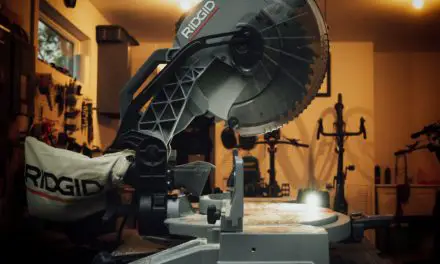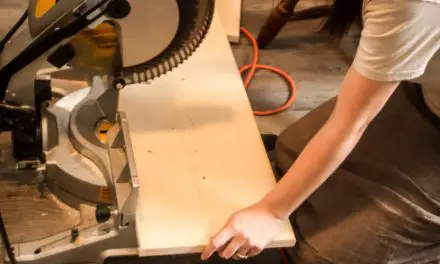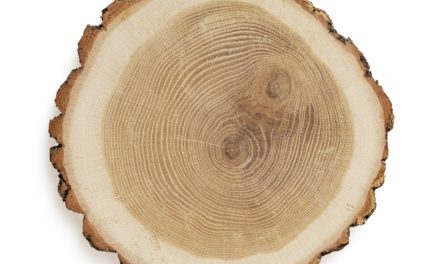Beginning a new DIY can be fun or daunting, depending on your experience level. It can be tricky to learn how to work with new railway sleepers if they need to be a specific length because you have to cut them down yourself. What do you use to cut them? Can you cut them with a circular saw?
The most effective way to cut railway sleepers is with a circular saw. This tool provides the most control and the most accurate cut. However, due to their thickness, you may have to make shallow cuts and rotate them as a circular saw may not be able to cut deep enough to go straight through.
Circular saws are extremely affordable and are fairly user friendly as long as you follow all safety requirements. Their adaptability and high power also makes them useful for cutting through large blocks of wood, like railway sleepers. Keep reading for more tips on cutting railway sleepers with a circular saw.
What Tool Is Best for Cutting Railway Sleepers?
If you’re a tool enthusiast, you should have a large selection to choose from. What tool is best for cutting railway sleepers?
There are two options. Let’s get into them below.
Circular Saw
For projects where your timber needs to fit tightly and accurately, a circular saw is your best bet.
Using a circular saw to cut railway sleepers will get the job done quickly and keeps cuts straight.
Although the sleepers will have to be rotated occasionally, a circular saw will be much faster than any other alternatives.
Handsaw
What if you don’t have a circular saw? Don’t fret, you can still complete your project.
A handsaw can be used to cut softwood railway sleepers. However, using this does mean you will have to put in a lot more elbow grease and you will be more likely to make mistakes on your cuts.
So, take this information into account before you start your next project.
Other Tools You Need to Cut Railway Sleepers
Railway sleepers come in two types, softwood and hardwood. Softwoods are the cheaper option but have a slightly shorter lifespan than hardwood.
Which you use will depend on what other tools you will need to cut them properly.
Some things you may need:
- Universal saw
- Combo drill
- Belt sander
- Protective gear
Now that you’re able to cut your railway sleepers without an issue, what can you use them for? Keep reading to find out.
What Can I Use My Cut Railway Sleepers For?
Whether you already have a project in mind and have leftovers or you are just experimenting, you may be wondering what to use your freshly cut railway sleepers for.
Some ideas include:
- Raised garden: Railway sleepers make a great foundation and wall for raised garden beds. Both softwood and hardwood sleepers are suitable.
- Garden edging: Due to railway sleepers size and shape being identical to each other, they make a great material for lawn or garden edging. You can use them around garden beds, to make a path, or around a fixture like a gazebo or patio.
- Sandpit: Sleepers are a great way to make a sandpit for the kids in your family. Simply use them to block out the area you want and then add sand! We do want to note that you should only use purchased oak sleepers for this, as reclaimed sleepers contain the material creosote, which is corrosive to skin.
Now you have some great ideas on how to use railway sleepers in your next project.
How to Preserve Railway Sleepers
Railway sleepers have a lifespan of about 15 to 20 years depending on whether you are using soft or hardwood.
However, they can rot if you don’t take care of them. Keep reading to learn how to preserve your railway sleepers.
Oil Technique
By using a clear wood oil or decking oil, you can protect the wood from the elements while also allowing it to age and change color.
Make sure the oil you use doesn’t contain any UV filters, as this can hinder the aging process.
Creosote Treatment
As we mentioned above, creosote is a compound that industrially made sleepers are treated with. It is toxic and harmful to the skin.
However, some companies have made a less toxic and more environmentally friendly version called Creosolve.
Use Reclaimed Railway Sleepers
Buying new sleepers may require treating them with oil or Creosolve to extend their life and protect them from rotting is an option, but what if you want something cheaper and less laborious?
Reclaimed industrial railway sleepers will often last decades above ground without any further treatment and are very unlikely to rot.
Knowing your options is the best way to upgrade your computer so use our list to pick the best ones for you.
Conclusion
The short answer is that, yes, not only can you cut railway sleepers with a circular saw, but this is actually the preferred method.
Using a circular saw on railway sleepers will get you the fastest and most correct cut when compared to using a hand saw or universal saw.
We hope this guide will help you achieve your next do- it-yourself project.





